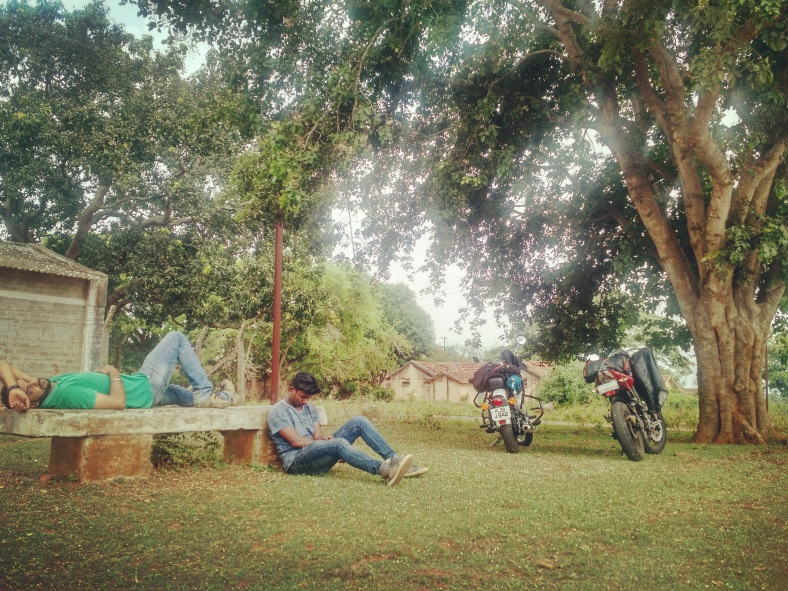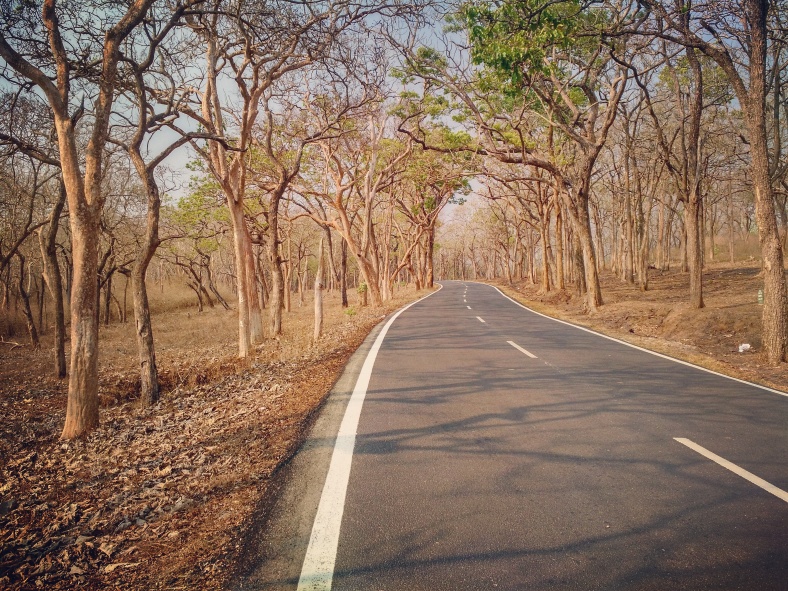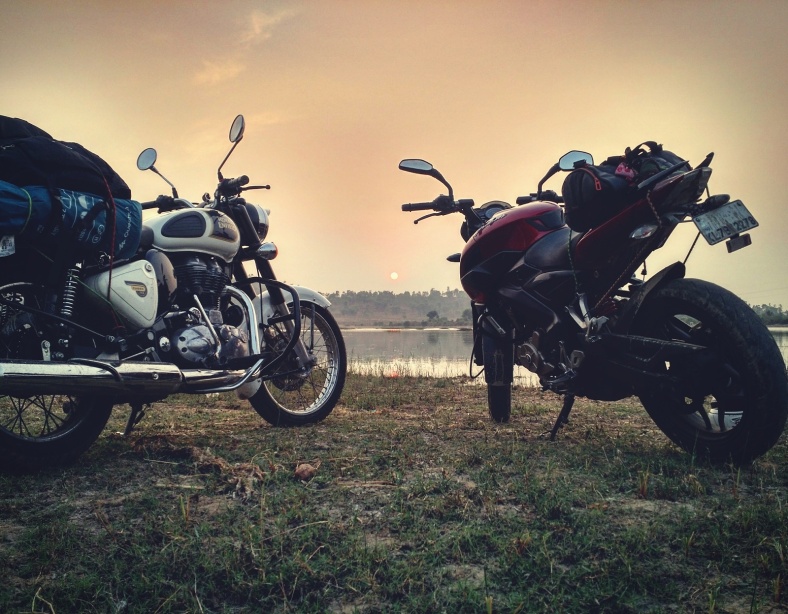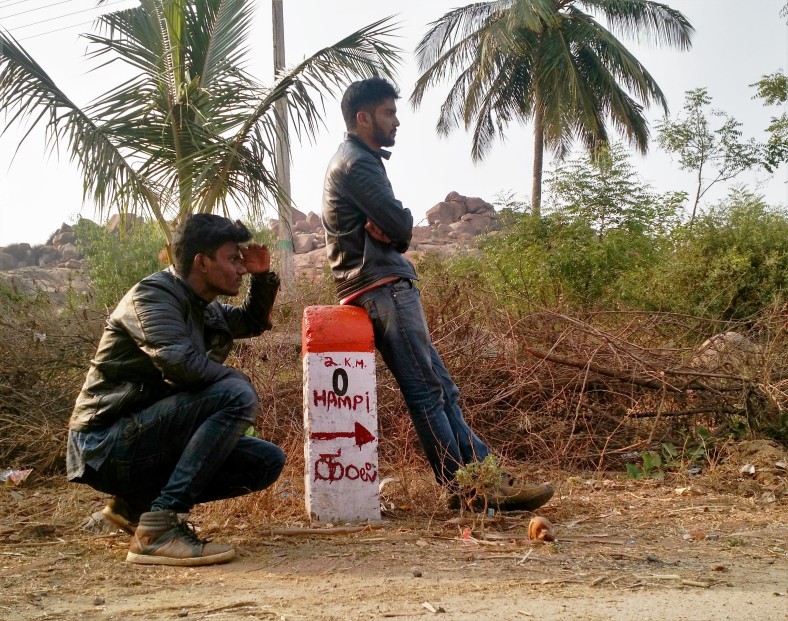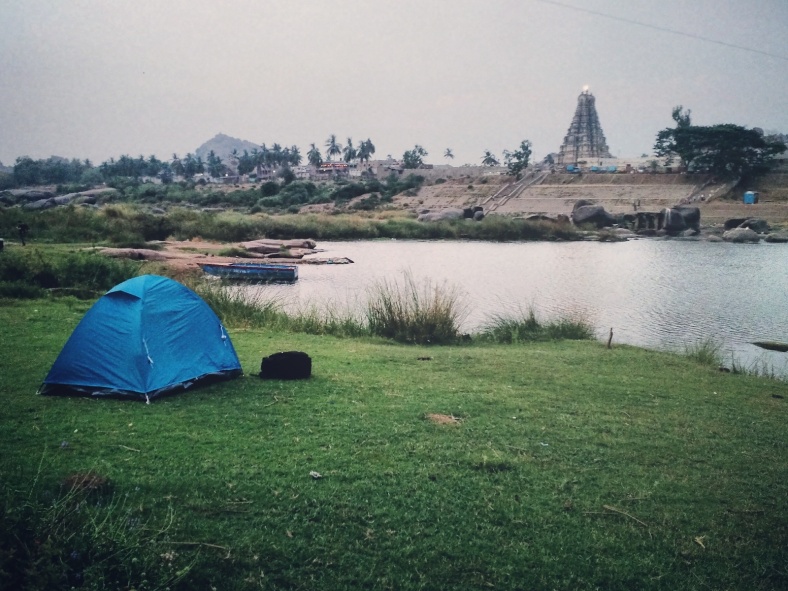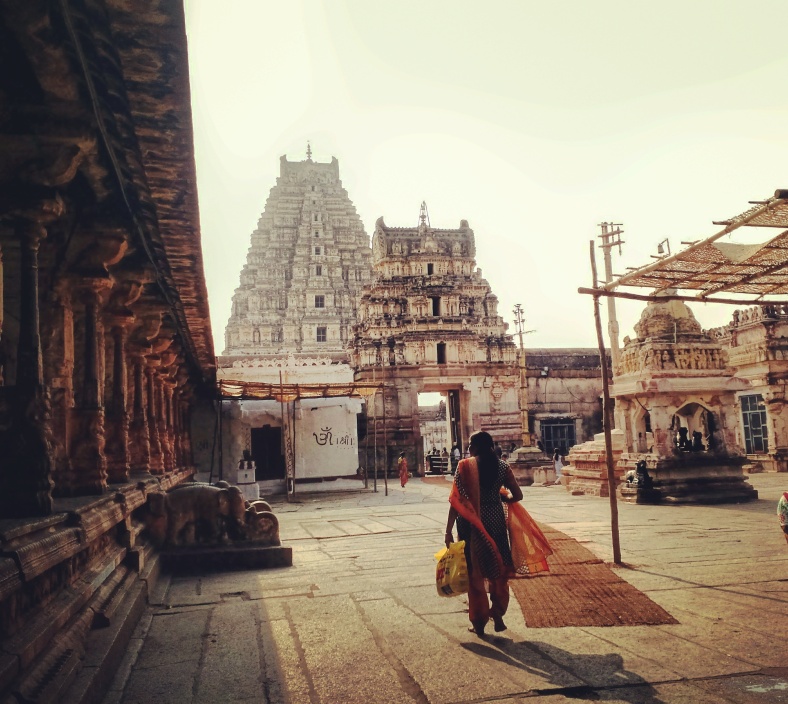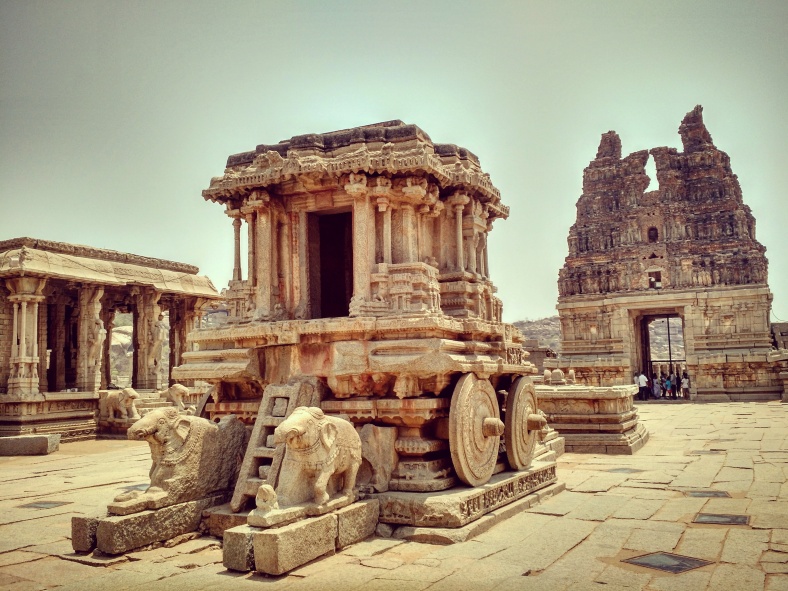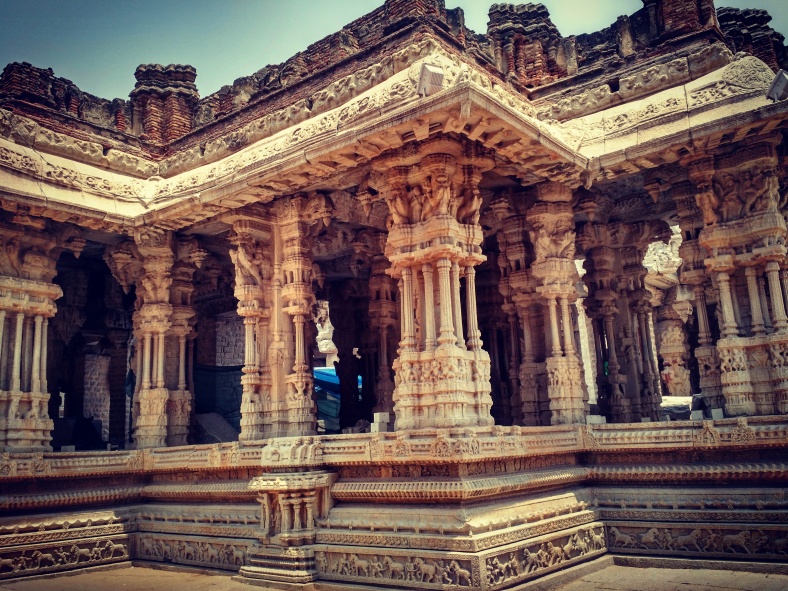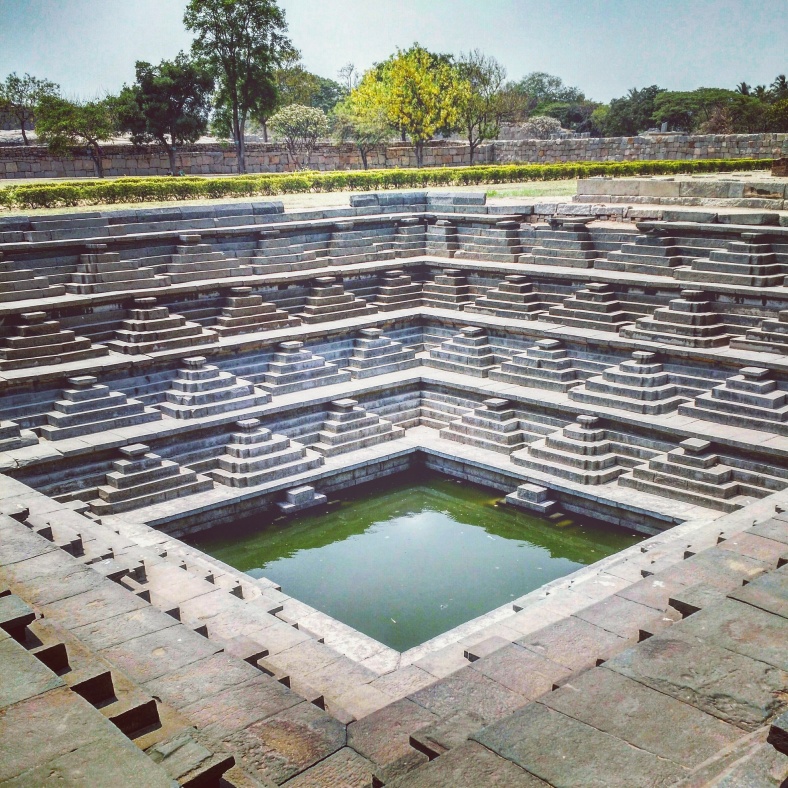Indian Hindu mythology has it that Lord Rama built a bridge some 50 kms long connecting India with Lanka (now Sri Lanka) to rescue his wife Sita from the evil clutches of the demon king Ravana. And he pulled off this engineering marvel with the help of his million strong Vanara (Ape men) army and magical ‘floating rocks’ and named it Rama Setu.
Valmiki further goes on to narrate in the Ramayana on how Rama on his successful return, destroyed this bridge with the tip of his arrow on the request of Vibishan, the new king of Lanka, thus immortalizing the town’s name, Dhanushkodi -meaning end of a bow.
Turns out this mythological bridge despite its questionable origins was actually a thing and even passable on foot up to the 15th century until storms eventually deepened the channel. Don’t believe what I say, check out this Google maps screenshot for yourself.
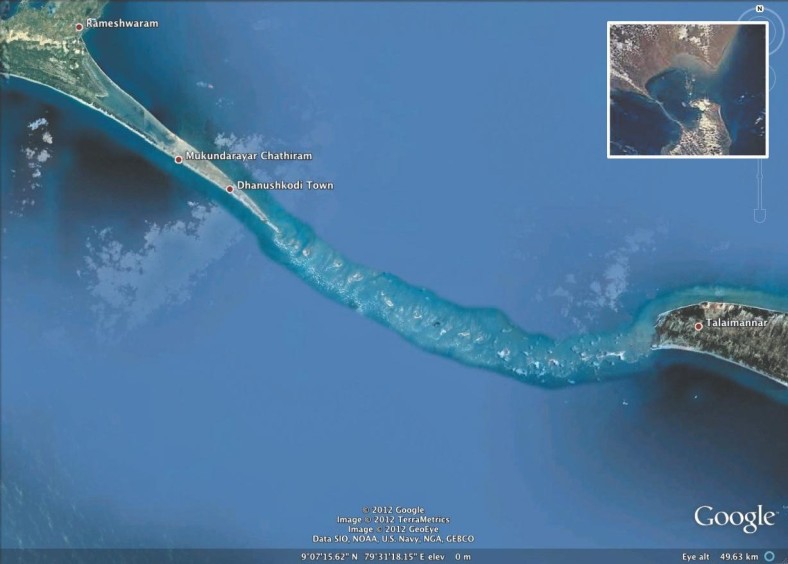
The association with the Ramayana along with its proximity to Rameswaram, where Rama is said to have prayed to Lord Shiva before embarking on his journey to Lanka vest the town of Dhanushkodi with much divinity.
But unfortunately all the divinity in the world couldn’t spare this coastal town on the night of 22nd December 1964, when a cyclonic storm regarded as one of Bay of Bengal’s fiercest in the 20th century ravaged through it with waves estimated to be several meters high destroying and wiping away everything in its path including the Pamban-Dhanushkodi Passenger train along with all 115 passengers on board.
In total around 2000 people lost their lives that night following which Dhanushkodi was officially declared by the Government of Madras to be a Ghost Town, unfit for living.
All that remains today of the once bustling town are ruins of a few prominent buildings and remains of what once was a railway track, a grim reminder of that tragic night. A handful of fishing families have dared to continue living here despite the obvious threats, making a living off the tourists visiting the place.
But rather than the mythology and its ill-fated history, what drew me to this place was the idea of a ‘mini cross-country road trip across the southern tip of the country on a motorcycle’. As ordinary as it may sound, there was something about that statement that had me hooked.
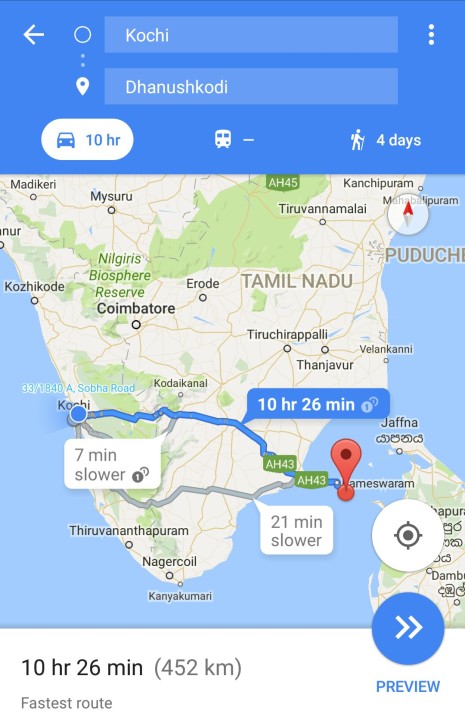
Our ‘mini cross-country road trip’.
So in June 2015, me and my crazy buddy Arun set off on our three-day ‘mini-adventure’ to the tip of the country. The only plan we had was to make sure we got back within the said three days and convince a friend of ours to lend his 150 cc CBZ- Xtreme for Arun. Everything else was decided along the way, including a pit stop at Kodaikanal for the first night of the journey.
The entire 300 odd kms from Cochin to Munnar and then to Kodai via Theni was scenic beyond measure and every biker’s dream come true with hills, hairpins, plains and everything in between.
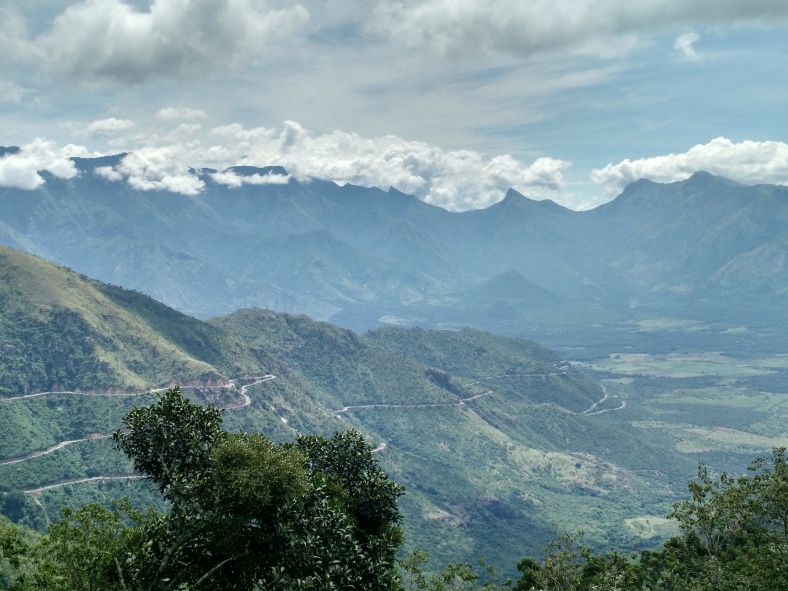
Curves ahead! – Theni below
Our brief stop at Kodai included a short trek to Bear Shola Falls and a night stroll around the Kodai Lake before bargaining our way to the cheapest room for the night. Even though the place screamed touristy much to our dislike, its weather made our visit worthwhile.
The next day, we bid adieu to the land of magic mushrooms at the break of dawn and started our descend downhill, taking in all the beauty these magnificent hills had to offer and turned out to be quiet the posers ourselves along the way.
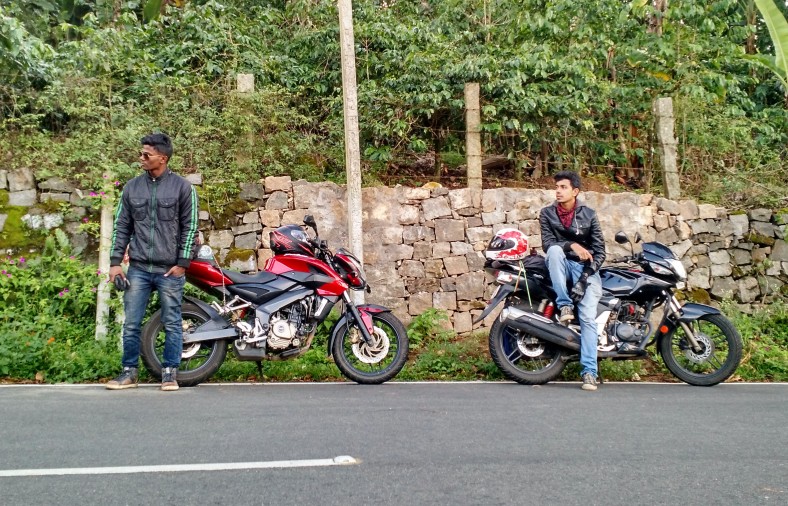
Must be the mushrooms!
The following journey towards Rameshwaram via Madurai remained uneventful apart from the scorching afternoon sun relentlessly following us for all the 150 plus kms from Madurai as we made our way through the dry and unforgiving plains of Tamilnadu with nothing but shrubs and bushes for company. Men and machines were tested to their limits.
But the sheer beauty of two magnificent oceans welcoming you on either sides all the way from the Pamban Bridge as you enter Rameshwaram makes all the effort and heat strokes worthwhile.
The raging Indian ocean on the right in contrast to the calmer waters of the Bay of Bengal on the left until they finally conjoin as one at the tip of Dhanushkodi appropriately named as the ‘Sangam’.
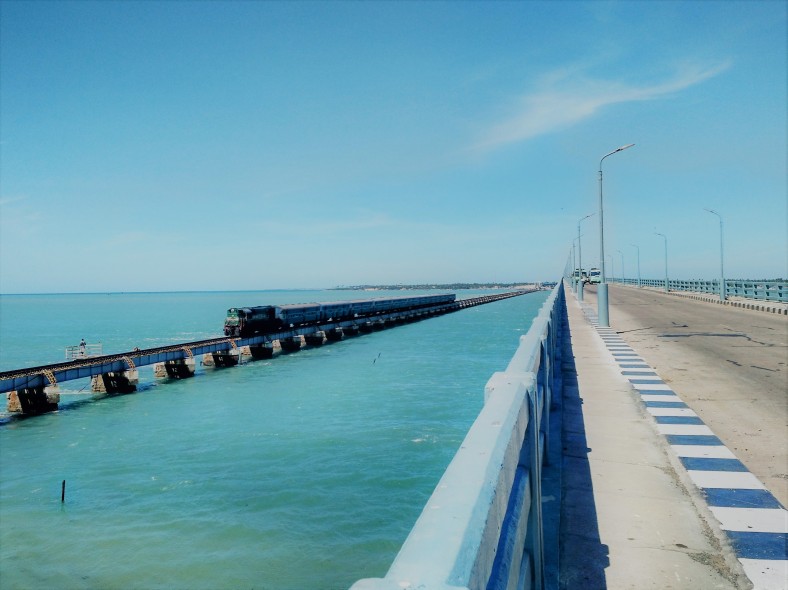
The 100 year old Pamban Railway Bridge still standing strong.
And it is at this meeting point barely 50 kms from our neighboring island nation, you may even be fortunate to get Sri Lankan reception on your mobile (Depending on the quality of your cell’s reception). It is said that on a clear night one could even catch a glimpse of the lights from Thalaimannar in Sri Lanka.
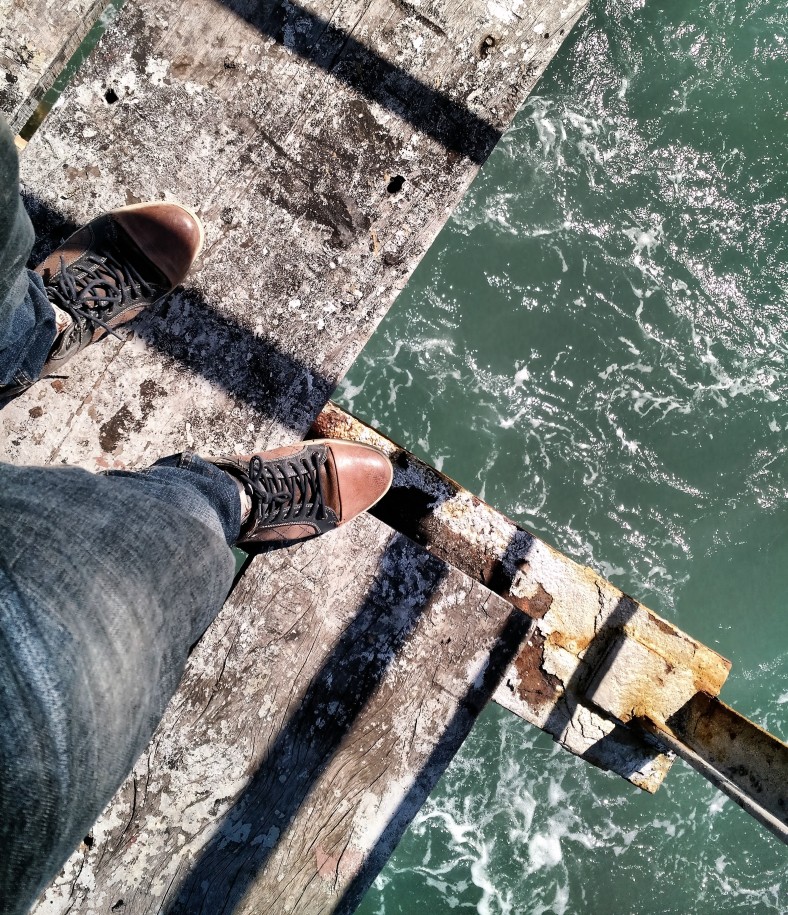
A view of the raging ocean below from the Railway Bridge.
A late and much deserved lunch and a short stroll around the Rameshwaram Temple later, we made our way towards the final leg of our journey, Dhanushkodi.
This short ride from the temple town to the tip was personally my favorite bit, with oceans barely a few feet on either side of the narrow two laned road and with hardly any vehicles or civilization around, I couldn’t help race through this stretch of fine tarmac. The strong cross winds just adds to this crazy adrenaline rush.
It was almost 6pm by the time we reached the barricade at Muhuntharayar Chathiram from where one had to take a jeep or mini-tempo to the tip which was otherwise inaccessible by other vehicles as you’d most definitely get stuck in the sand and slush.
Unfortunately, what we also didn’t know was that the tempo drivers would stop service by 6pm which meant the only way to get to the tip was by a half hour trek on foot. But trekking after dark along a narrow shore line with oceans on either sides and with the tides coming in, didn’t seem to be the best of ideas.
But we had made it this far and were in no mood to let that bring us down. So setting aside the journey to the tip for another time, we made ourselves comfortable for the show that followed. Afterall, we did have the best seats in town.
[Post Update: With the completion of the five-km-long road link between Muhuntharayar Chathiram and Dhanushkodi in February 2016, this would no longer be an issue as visitors can now go upto the very tip in their own vehicles without the help of jeeps. Cheers to the Union Ministry of Transport & Highways! You can read the full article here]
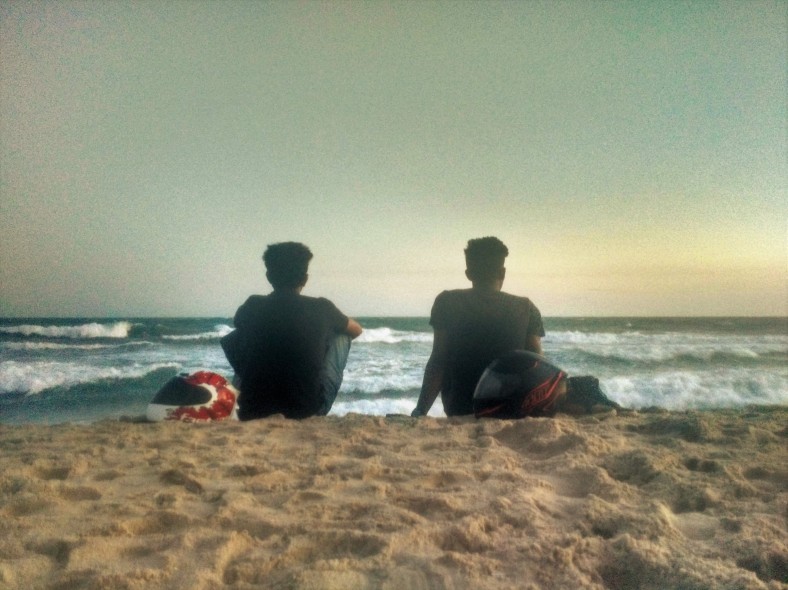
As the fiery sun submerged into the raging waters of the Indian Ocean scattering several hues of blue, green and orange across the twilight sky, it was by far one of the most dramatic sunsets I’d seen in a while.
We managed to find a room back at Ramnathapuram for the night. A long ride back home awaited us on the last day of our journey for which we decided we’d take the Madurai-Dindigul-Pollachi highway to save on time and to avoid going back the same route we had come.
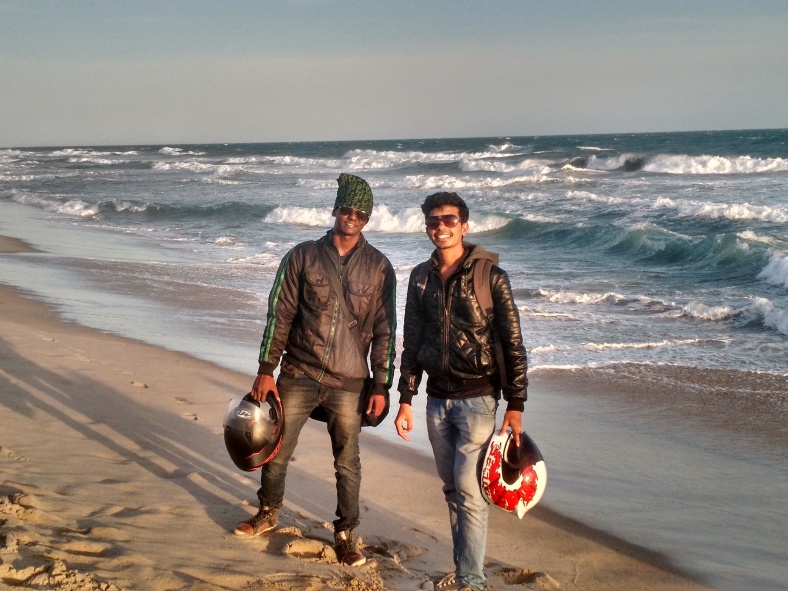
Eventhough our stop at Dhanushkodi was barely for a couple of hours, we were able to gain a whole new level of appreciation for this somber town, its people and its bitter past.
Emanating an almost alluring aura, this place had the ability to lull even the most disturbed minds to ease as it represents both sides of the same coin, one turbulent and engulfed in rage and the other more tranquil side that seems almost melancholic epitomizing life in itself, which is nothing but a grand balancing act of the two.
Don’t get me wrong, this underrated destination on the tip of the sub-continent is nothing more than a beach. That is until you dig a little deeper and let loose your senses to its astounding array of hues, aura and history. That is when you experience Dhanushkodi to its fullest and that is when you truly take back home a small piece of its history.
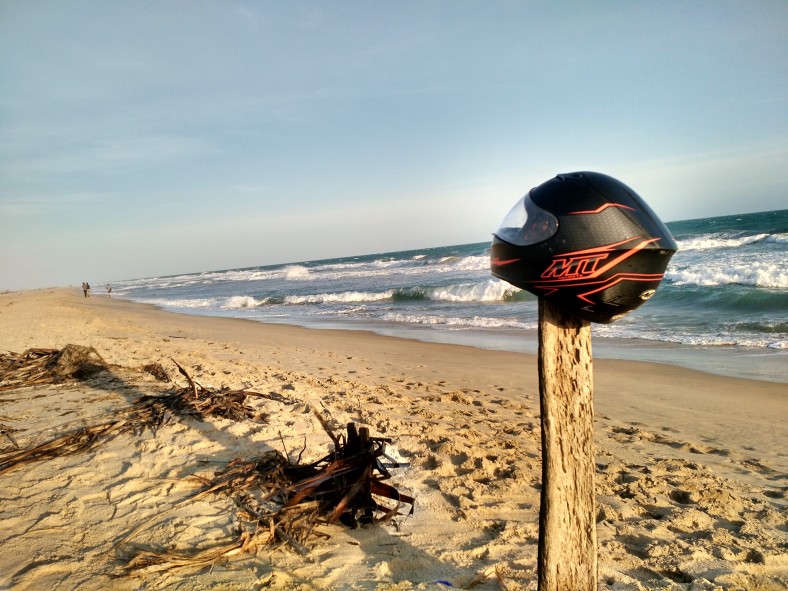
The Clueless Muni now has a new address! Follow, share & spread the love at thecluelessmuni.com.


